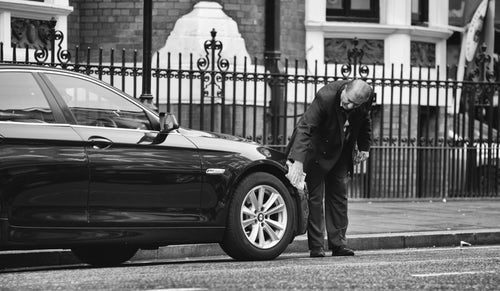MANY NEW CAR BUYERS wonder if that sparkling paintwork needs to be polished. Others worry that by waxing their new car, they may actually cause some damage to the finish.
I don’t pretend to know technical details about modern paint finishes, so my first port of call is Paul Henshaw at Custom and Classic Cars in Mount Barker, South Australia (find them here).
As I pull up, I almost don’t need to ask the question; he’s hard at work polishing his wife’s Hyundai, something he tells me he does twice a year. “We recommend hand polishing modern cars twice a year,” he suggests. “Once just before winter so it’s protected against the rain and harsh weather, and again just before summer so it’s protected against the harsh sun.”
Paul explains further, “You’re not actually polishing the paintwork, just adding a protective coating. The old style cut and polish actually cut the paint back to reveal a new layer; more modern products simply polish the surface and hide and mask swirl marks rather than removing them. A gritty cutting compound, one where you can feel the grit between your fingers, applied with an orbital lambswool buffer will actually destroy the paint job. Once you’ve done that,” he warns, “you’ll need to wet rub and polish to restore the paintwork, and that’s a day’s work for someone who knows what he’s doing, and likely to cost between $500 and $1000.”
So, what about those paint protection systems most dealers try and sell you when you’re buying a new car? Paul isn’t as critical as I would have expected. “Look, not everyone wants to spend a day washing and polishing their car so for people who are lazy about maintaining their cars, these packages provide a semi-permanent coating that takes the place of regular polishing. But really,” he asks “at up to $1500, is it worth it?”
Modern polishes are so simple to use, you have to think he has a point. Simply wash the car, put it in the shade and apply the polish. Give it time to dry and just wipe it off – Paul suggests applying something like one of the well-known brands such as Meguiars polish, then going inside for lunch before finishing the job. “Just keep it off the black stuff like bumpers,” he warns. “Although there is a product you can buy to remove it from black plastic if you mistakenly apply it where you shouldn’t.”
If you can feel a grittiness to the paint when you run your hand over it then you may need to use a clay block before applying the polish. The clay block removes those tiny gritty deposits and surface contaminants. Paul recommends squirting the surface with detergent then wiping with the clay block. Hose it off and check the surface and, in the immortal words of the shampoo bottle, repeat if necessary. Once the car is dry, apply the polish in the shade.
Darker finishes are more likely to show swirls and small scratches, and there are specialist products to treat darker colours. Check with your local auto supply shop.
Another concern many new car owners have is working with clear coat, the transparent top finish in modern paintwork. Because modern waxes are not actually polishing the paintwork but applying a protective coating, there will be no problem. “In fact,” adds Paul “ceramic clear coats as applied to some luxury brands such as Mercedes-Benz go so hard that you physically can’t polish them. When we apply a ceramic clear coat, we have to cut and polish within 24 hours or it goes so hard it’ll take us a month to polish it.”
Although the ceramic clear coat is more resistant to swirls and scratches, it can still become marked. If you remove some of the clearcoat, the paint below is much softer and will not polish out or react the same way as the original coating did. Once this happens, it becomes more difficult to maintain and causes problems if work is required on the paintwork at a later date.
If the normal clear coat has worn away, you may be tempted to simply sand the rest of it off and spray a clear coat over the top. Unfortunately, you won’t get a good result unless you first apply a new base coat. If you want to change the colour, you should start with a primer coat.
So, despite the advances in paint finishes, it looks like we’re still going to be spending time carefully washing our cars and then applying a protective wax coating. Just as well it’s a labour of love.
